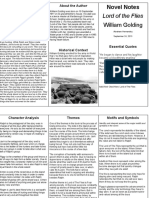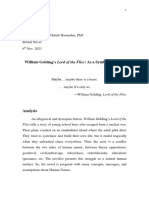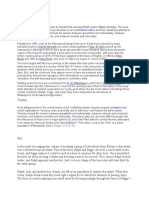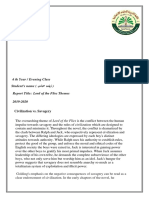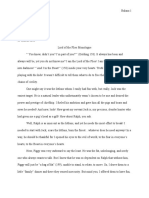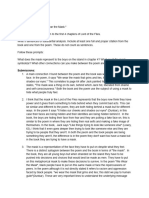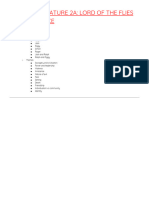0% found this document useful (0 votes)
26 views3 pagesEnglish Assignment
William Golding's 'Lord of the Flies' explores the inherent darkness of human nature through the story of boys stranded on an uninhabited island who descend into savagery. The title symbolizes the evil within humanity, represented by a severed pig's head that embodies the boys' fear and moral decay. Major themes include the conflict between civilization and savagery, loss of innocence, inherent human evil, power and corruption, and the consequences of fear.
Uploaded by
AliCopyright
© © All Rights Reserved
We take content rights seriously. If you suspect this is your content, claim it here.
Available Formats
Download as PDF, TXT or read online on Scribd
0% found this document useful (0 votes)
26 views3 pagesEnglish Assignment
William Golding's 'Lord of the Flies' explores the inherent darkness of human nature through the story of boys stranded on an uninhabited island who descend into savagery. The title symbolizes the evil within humanity, represented by a severed pig's head that embodies the boys' fear and moral decay. Major themes include the conflict between civilization and savagery, loss of innocence, inherent human evil, power and corruption, and the consequences of fear.
Uploaded by
AliCopyright
© © All Rights Reserved
We take content rights seriously. If you suspect this is your content, claim it here.
Available Formats
Download as PDF, TXT or read online on Scribd
/ 3











































